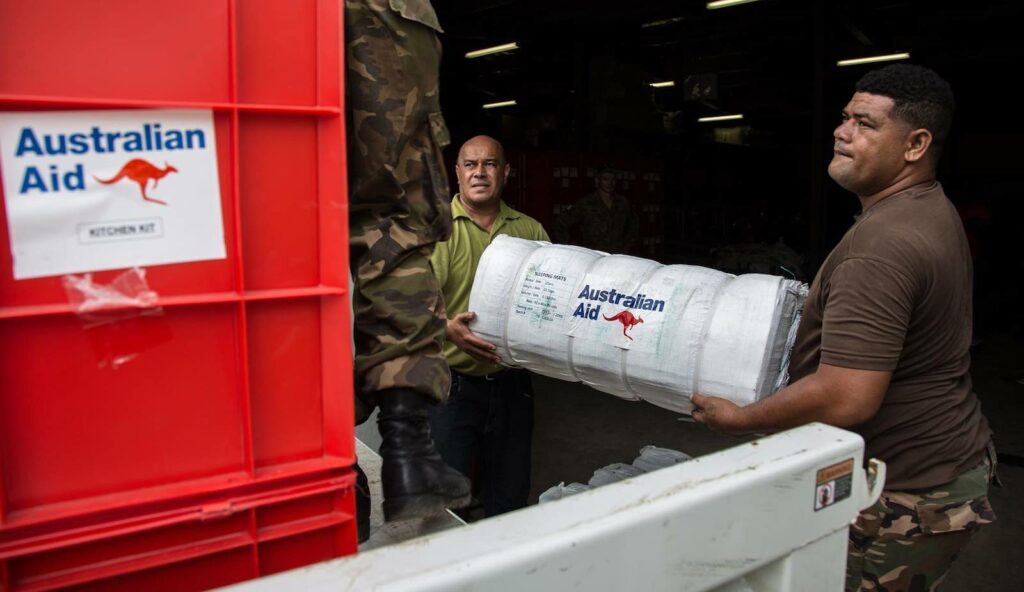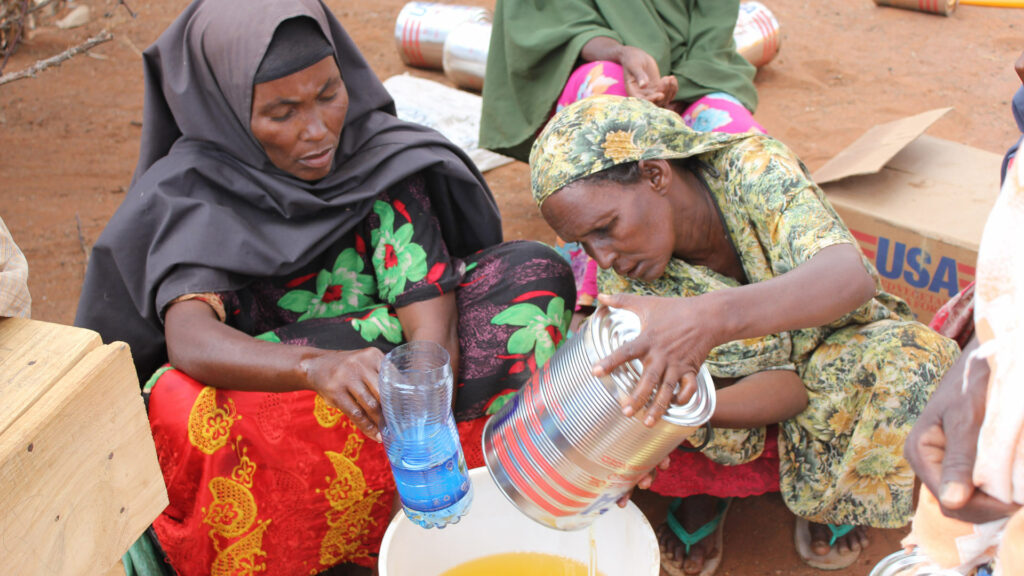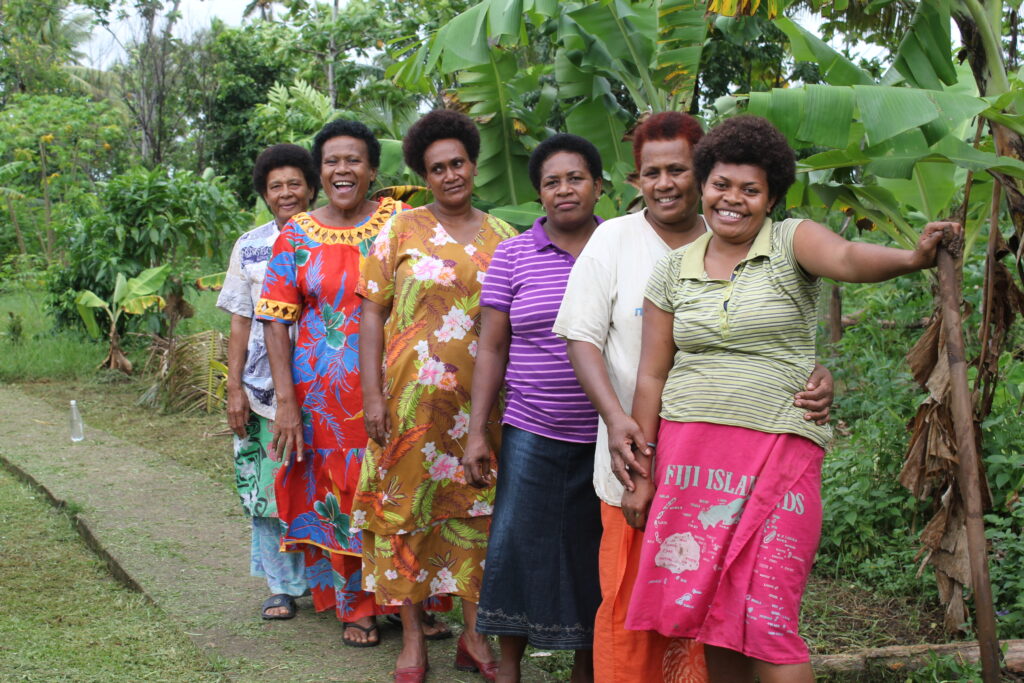The Federal Budget was handed down this week. Set amongst a backdrop of COVID-19 wreaking havoc on our close neighbours like India, extreme poverty and hunger rising, the questions is: has Australia’s aid budget gone far enough in 2021?
Here’s our rundown of what you need to know on the aid Budget, and how it relates to Micah’s Budget Submission we wrote in January.
You can also watch our Budget Breakdown Video.
Overall aid Budget figures
The official development assistance (ODA) announced for 2021-2022 is $4.335 billion, focused on helping our closest neighbours respond to the devastating impacts of COVID-19.
This is expected to represent an estimate of 0.21% of Australia’s Gross National Income in 2021-22, with this being a decrease from 0.23% in the previous financial year.
While Australia’s fast initial response to step-up and help our neighbours respond to the pandemic has been highly commendable, we are concerned that aid in the long-term is still heading in a downward direction.
After Australia’s aid generosity reached an historic low in 2019, Australia really stepped up in 2020 by announcing over $1.3 billion in new and additional temporary measures to help our neighbours access vaccines and respond to the pandemic.
These announcements reflected the first increase we had seen in Australia’s aid budget in more than 6-years and we welcomed them warmly – good news!
However, while we understand that the Government sees these increases as temporary measures, we know that addressing the full impact of COVID-19 on global development, is going to require us to be in this for the long haul.
According to the Development Policy Centre, Australia was the 14th most generous DAC member in 2015, contributing 0.29% of GNI as development assistance. In 2020, its ranking has dropped to 21st. Australia was the tenth richest country in the OECD in 2018.
This is an unfortunate trend, given the severe impacts COVID-19 is having on those living in extreme poverty.
In our Budget submission, we called on the government to make permanent the additional temporary financial support which had been provided, of $1.1 billion towards the Pacific Relief and Recovery Fund, the COVID-19 vaccine rollout and for support in the ASEAN region for a range of development, security and economic commitments. The budget however failed to reflect this ask.

Highlights in Budget:
The good news is, the budget is ‘on track’ with commitments made last year during COVID an including: $162.6M for vaccines in the Pacific and Southeast Asia, $100M to assist with the impacts of COVID-19 in the Pacific and Timor-Leste and $56M to support economic recovery in Southeast Asia.
New Investments:
There were also two ‘good news’ pieces for our neighbours:
- A new $37.1m support package for India which will help provide essential medical supplies such as ventilators and oxygen concentrators. (This includes $20.4m in 2020-21 and $16.7m in 2021-22)
- The Commonwealth has also committed to share 10,000 Australian made COVID-19 vaccine doses each week with our neighbours in the Pacific and East-Timor.
Bad news:
No significant famine package:
Micah, alongside the End COVID For All campaign, called upon the government to provide a much needed $150M famine package to address food security and child malnutrition in countries at high risk of famine, particularly in Africa and the Middle East.
As Tim Costello pointed out, “at the end of last year, the United Nations estimated 270 million people were at high risk of, or already facing, acute levels of hunger. This represents an 82 per cent increase on pre-COVID levels.”
Disappointingly, the government failed to provide funding for this necessary support. Additionally, the regions of sub-Saharan Africa, North Africa and the Middle East all faced further reductions to funding1.
We would like to see the Government join G7 governments, like the United States and United Kingdom, which last week committed to act via a Famine Prevention and Humanitarian Crises Compact.

Disability Funding:
Disability funding has been maintained at $9.6m in 2021-22.
This is disappointing because it means the 25% funding cut from last year has not been restored.
We stand with our friends at CBM in calling for an increase to the central disability allocation to a minimum of $14m per annum.
(As a part of our submission, Micah called upon the government to restore central disability funding, which has been reduced continually since 2016).
CBM CEO Jane Edge stated this week that “People with disabilities are dying at higher rates, they are going hungry, they are without access to medical care and are being pushed into deeper poverty…Immediate strategic and financial intervention for people with disabilities is desperately needed to reduce widening inequalities”.
Other important areas:
Global Humanitarian Funding:
This year’s Budget sees a modest increase to $485.3m for humanitarian assistance but it’s a far cry from Australia’s global fair share.
In our submission, we asked the government to protect the world’s most vulnerable by providing Australia’s fair share of global humanitarian funding, $696 million per year.
It’s important to note that it was the government’s own 2017 Foreign Policy White Paper that committed to $500m per year.
It is also unclear when it comes to global humanitarian funding which protracted crises will receive funding from the 2021 – 22 budget, and whether multi -year funding packages will be continued.
Gender Equality and Pacific Women Lead:
COVID-19 is having a disproportionate impact on women and girls with a ‘shadow pandemic’ when it comes to violence against women.
In our submission, we asked that the government commit a minimum of $304 million over eight years for the Pacific Women Lead program (Australia’s flagship gender equality investment) in order to build on the momentum established by Pacific Women and ensure that COVID-19 response and recovery can continue into the future.
The budget did include $170M for the Pacific Women Lead initiative from 2021-2026.
The budget also provided an “estimated $1.3 billion to support gender equality across the development program” which is very positive.
However, there is a lack of clarity on where the estimated $1.3 billion is being spent across the portfolio.

Climate Change:
The government invested in the Australian Climate Finance Partnership, providing $140M between 2020–2024. This partnership “will catalyse private sector investment in climate adaptation and mitigation projects in the Pacific and Southeast Asia”.
Furthermore, the government increased funding for climate partnership programs from $20M in 2020-21 to $40m in 2021- 22.
This is an area to watch as The Government has committed to spend $1.5b on climate change assistance to 2025 and further allocations of this funding may be announced in the lead up to the Glasgow Climate Summit (COP26) in November.
Multilaterals:
In our submission, we encouraged the government to maintain and strengthen the development cooperation portfolio’s global program through investments in effective multilateral and non-government organisations.
In the budget we see a slight increase in funding for NGO’s, with funding increasing from 138.6 million in the previous budget to 139.1 million in the new budget. Cash payment to multilaterals however, decreased, from 362.6M to 328.7M.
Transparency:
One big area of concern for the foreign aid Budget continues to be the area of transparency.
While this year there was further detail from the government on its COVID-19 support measures, overall information remains limited.
The Official Development Assistance total and forward estimates have not been provided in the Budget documents.